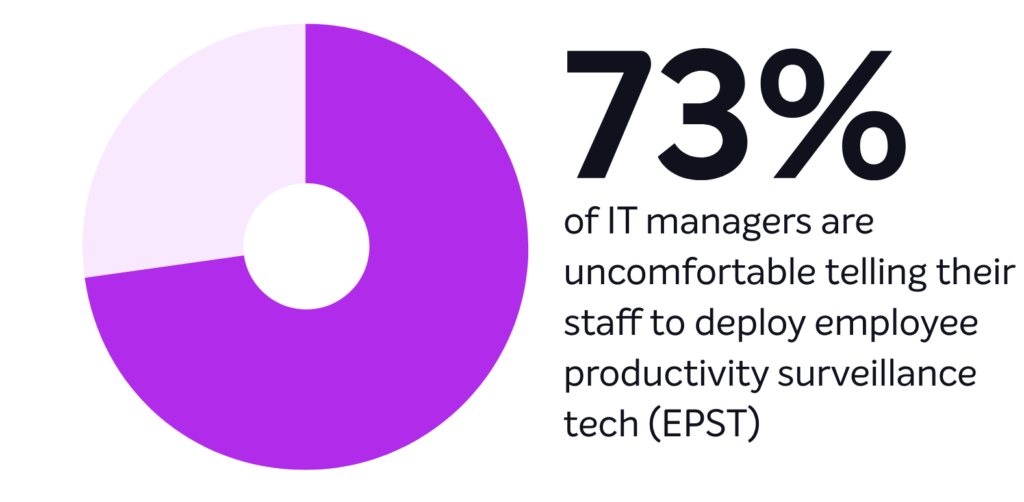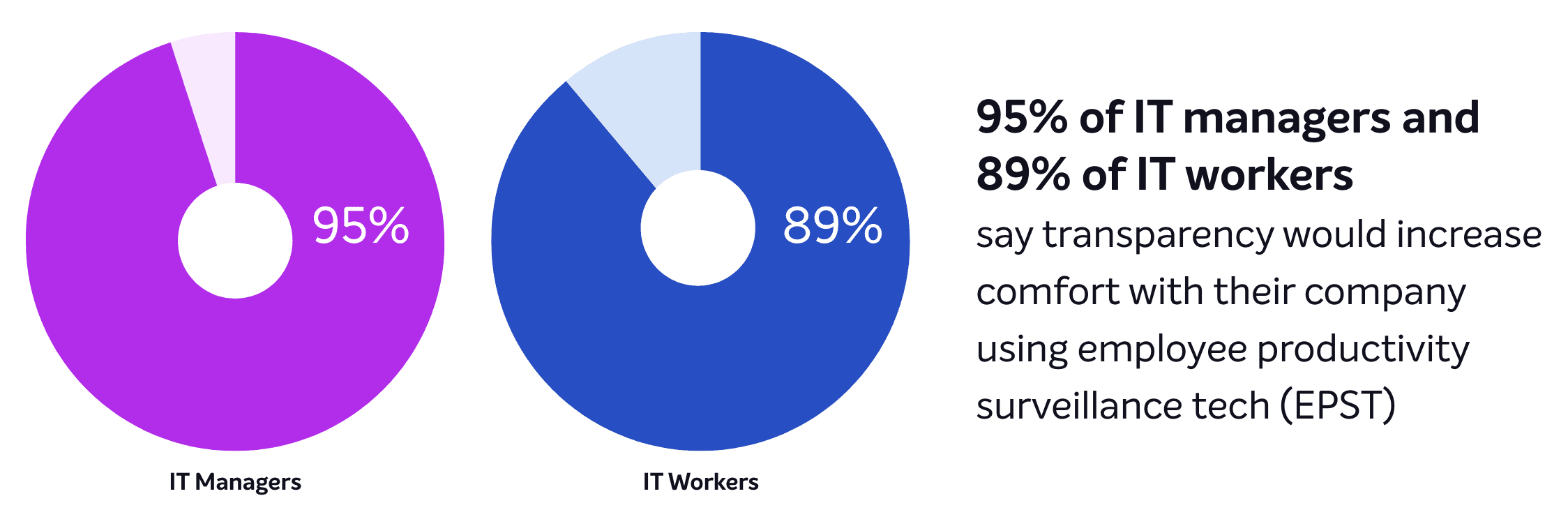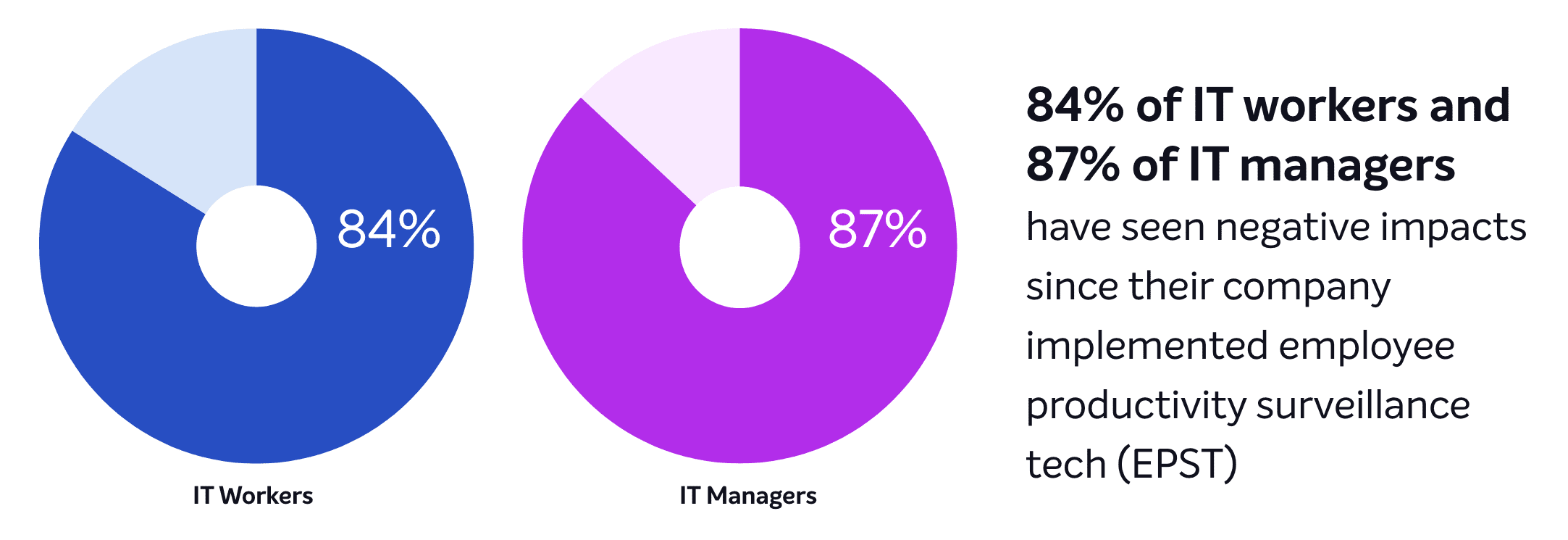The pandemic induced move to remote and hybrid working models brought with it a new challenge regarding monitoring the productivity of employees. There's been a massive increase in organizations employing monitoring software to surveil the productivity of employees no longer working within leadership's line of sight. In fact, the demand for this software has risen by 58% since the start of the pandemic.
With employee productivity monitoring tech (EPST) more popular than ever, we wanted to better understand the impact integrating this software has on organizations. And –in particular—the previously overlooked perspective of IT workers tasked with implementing the tech and monitoring its use. Let's take a look at some key findings.
What is employee productivity surveillance technology?
Employee productivity surveillance technology (EPST) refers to a range of tools that companies use to monitor employees’ productivity. Common EPST includes monitoring web activity, logging time spent using various programs, keylogging or click-logging, video recording, and audio recording.
IT is uncomfortable deploying surveillance tech
Though most IT staff currently work for companies using EPST, there's widespread discomfort around deploying it to watch their colleagues, especially if the organization isn’t fully transparent about the practice. The survey –consisting of 500 IT workers and 500 IT managers—revealed that most IT workers are uncomfortable deploying productivity surveillance technology to monitor their colleagues.

Although most IT workers feel that companies have a right to track productivity, many aren't comfortable with deploying and monitoring technology that does so. 54% of IT workers are uncomfortable deploying EPST and 73% of IT managers are uncomfortable instructing their staff to deploy the tech.
Transparency is essential
With 4 in 5 (79%) IT managers believing that their company is at least somewhat likely to start using EPST—if they don’t already—in the next three years, it’s important to understand how to most effectively track employee productivity.

Results show that disclosure will have a massive impact in this respect. The majority of both IT worker and manager respondents indicated that transparency around how EPST is being used would increase their comfort.
What is at stake?
The research shows that deploying employee surveillance software is often ineffective and can ratchet up employee anxiety, distrust, disloyalty, turnover, and more. In fact, most IT workers and IT managers say they've seen negative impacts since their company implemented EPST.

The repercussions of deploying productivity surveillance technology will take a toll on recruitment and retention efforts. More than half of IT workers would turn down an otherwise desirable IT position if they knew the company used EPST. And IT workers whose company isn't currently using the tech say requiring them to deploy it would negatively impact their willingness to remain in their current position.
Overall, the survey highlights that IT workers are uncomfortable with deploying productivity surveillance technology to monitor their colleagues, and that using such technology has a negative impact on both IT workers and managers. Employers should be transparent about their use of productivity surveillance technology and take steps to address the concerns of IT workers to maintain a positive work environment and attract and retain top talent.
Keen to learn more? You can read the full report here for more groundbreaking insights into one of today’s most controversial corporate practices.




